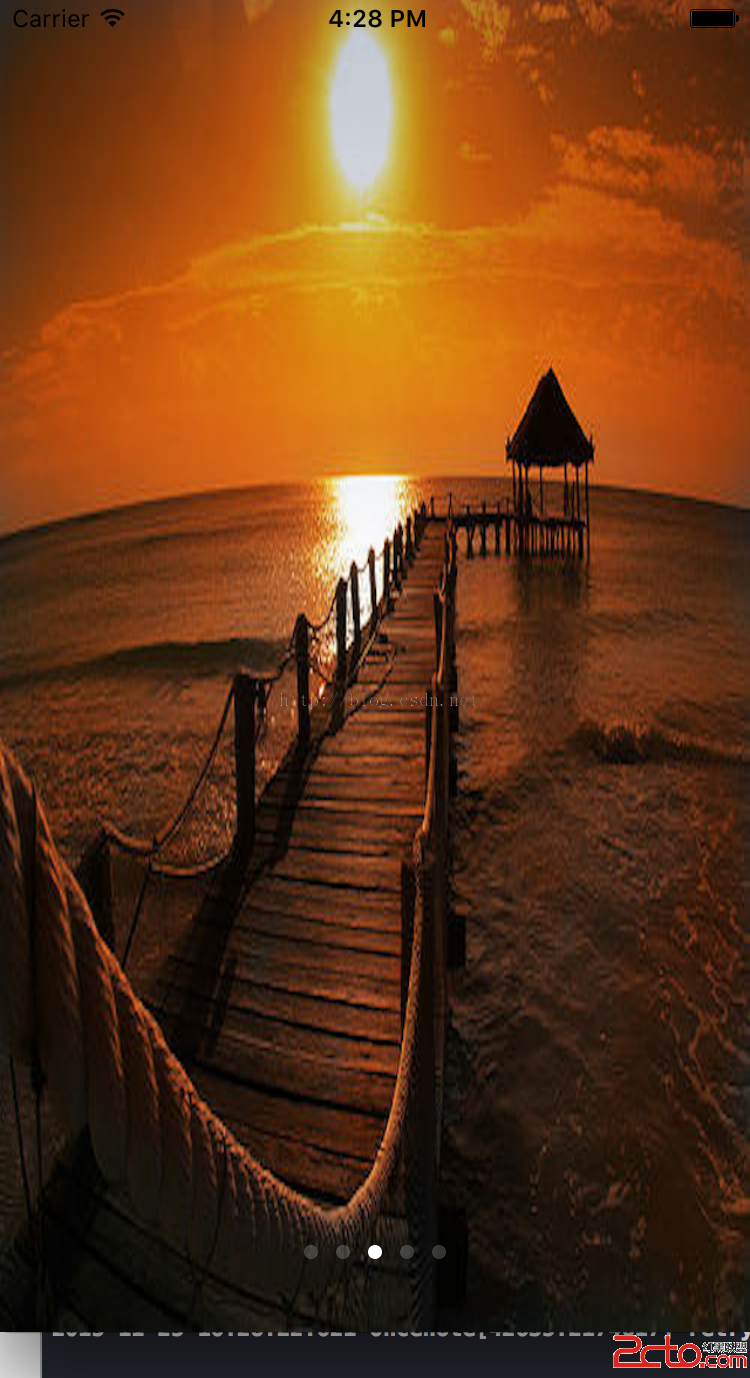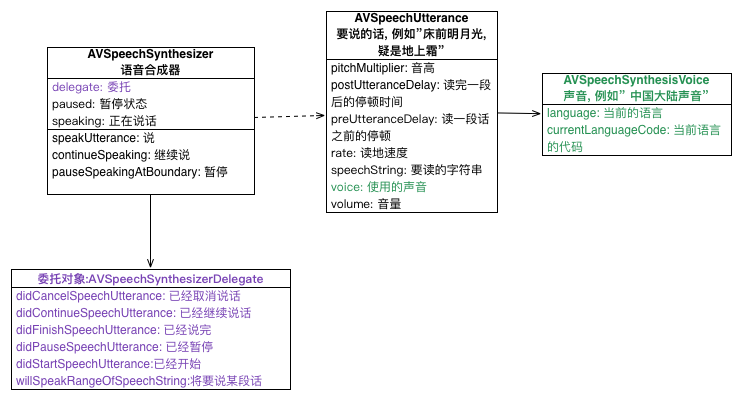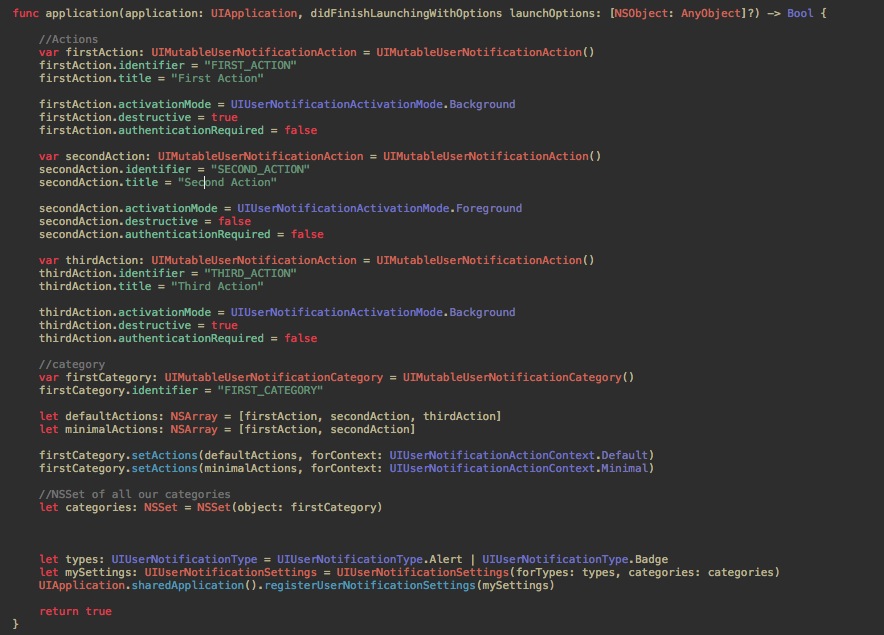iOS UIView常見屬性方法小結
編輯:IOS開發綜合
下面通過實例代碼給大家詳細介紹了iOS UIView常見屬性方法,具體代碼如下所示:
UIView : UIResponder /** 通過一個frame來初始化一個UI控件 */ - (id)initWithFrame:(CGRect)frame; // YES:能夠跟用戶進行交互 @property(nonatomic,getter=isUserInteractionEnabled) BOOL userInteractionEnabled; // default is YES // 控件的一個標記(父控件可以通過tag找到對應的子控件) @property(nonatomic) NSInteger tag; // default is 0 // 圖層(可以用來設置圓角效果\陰影效果) @property(nonatomic,readonly,retain) CALayer *layer; @interface UIView(UIViewGeometry) // 位置和尺寸(以父控件的左上角為坐標原點(0, 0)) @property(nonatomic) CGRect frame; // 位置和尺寸(以自己的左上角為坐標原點(0, 0)) @property(nonatomic) CGRect bounds; // 中點(以父控件的左上角為坐標原點(0, 0)) @property(nonatomic) CGPoint center; // 形變屬性(平移\縮放\旋轉) @property(nonatomic) CGAffineTransform transform; // default is CGAffineTransformIdentity // YES:支持多點觸摸 @property(nonatomic,getter=isMultipleTouchEnabled) BOOL multipleTouchEnabled; // default is NO @end @interface UIView(UIViewHierarchy) // 父控件 @property(nonatomic,readonly) UIView *superview; // 子控件(新添加的控件默認都在subviews數組的後面, 新添加的控件默認都顯示在最上面\最頂部) @property(nonatomic,readonly,copy) NSArray *subviews; // 獲得當前控件所在的window @property(nonatomic,readonly) UIWindow *window; // 從父控件中移除一個控件 - (void)removeFromSuperview; // 添加一個子控件(可以將子控件插入到subviews數組中index這個位置) - (void)insertSubview:(UIView *)view atIndex:(NSInteger)index; // 交換subviews數組中所存放子控件的位置 - (void)exchangeSubviewAtIndex:(NSInteger)index1 withSubviewAtIndex:(NSInteger)index2; // 添加一個子控件(新添加的控件默認都在subviews數組的後面, 新添加的控件默認都顯示在最上面\最頂部) - (void)addSubview:(UIView *)view; // 添加一個子控件view(被擋在siblingSubview的下面) - (void)insertSubview:(UIView *)view belowSubview:(UIView *)siblingSubview; // 添加一個子控件view(蓋在siblingSubview的上面) - (void)insertSubview:(UIView *)view aboveSubview:(UIView *)siblingSubview; // 將某個子控件拉到最上面(最頂部)來顯示 - (void)bringSubviewToFront:(UIView *)view; // 將某個子控件拉到最下面(最底部)來顯示 - (void)sendSubviewToBack:(UIView *)view; /**系統自動調用(留給子類去實現)**/ - (void)didAddSubview:(UIView *)subview; - (void)willRemoveSubview:(UIView *)subview; - (void)willMoveToSuperview:(UIView *)newSuperview; - (void)didMoveToSuperview; - (void)willMoveToWindow:(UIWindow *)newWindow; - (void)didMoveToWindow; /**系統自動調用**/ // 是不是view的子控件或者子控件的子控件(是否為view的後代) - (BOOL)isDescendantOfView:(UIView *)view; // returns YES for self. // 通過tag獲得對應的子控件(也可以或者子控件的子控件) - (UIView *)viewWithTag:(NSInteger)tag; // recursive search. includes self /**系統自動調用(留給子類去實現)**/ // 控件的frame發生改變的時候就會調用,一般在這裡重寫布局子控件的位置和尺寸 // 重寫了這個寫方法後,一定調用[super layoutSubviews]; - (void)layoutSubviews; @end @interface UIView(UIViewRendering) // YES : 超出控件邊框范圍的內容都剪掉 @property(nonatomic) BOOL clipsToBounds; // 背景色 @property(nonatomic,copy) UIColor *backgroundColor; // default is nil // 透明度(0.0~1.0) @property(nonatomic) CGFloat alpha; // default is 1.0 // YES:不透明 NO:透明 @property(nonatomic,getter=isOpaque) BOOL opaque; // default is YES // YES : 隱藏 NO : 顯示 @property(nonatomic,getter=isHidden) BOOL hidden; // 內容模式 @property(nonatomic) UIViewContentMode contentMode; // default is UIViewContentModeScaleToFill @end //動畫 @interface UIView(UIViewAnimationWithBlocks) + (void)animateWithDuration:(NSTimeInterval)duration delay:(NSTimeInterval)delay options:(UIViewAnimationOptions)options animations:(void (^)(void))animations completion:(void (^)(BOOL finished))completion; + (void)animateWithDuration:(NSTimeInterval)duration animations:(void (^)(void))animations completion:(void (^)(BOOL finished))completion; + (void)animateWithDuration:(NSTimeInterval)duration animations:(void (^)(void))animations; + (void)animateWithDuration:(NSTimeInterval)duration delay:(NSTimeInterval)delay usingSpringWithDamping:(CGFloat)dampingRatio initialSpringVelocity:(CGFloat)velocity options:(UIViewAnimationOptions)options animations:(void (^)(void))animations completion:(void (^)(BOOL finished))completion; @end
以上所述是小編給大家介紹的iOS UIView常見屬性方法小結,希望對大家有所幫助,如果大家有任何疑問請給我留言,小編會及時回復大家的。在此也非常感謝大家對本站網站的支持!
相關文章
+



